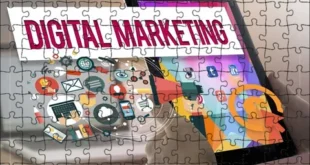Some companies have groundbreaking ideas for product development. They develop a Minimum Viable Product (MVP). This is the mini version of an app. As they move towards development, they make the core features and list down more features to be added within the MVP to test the concept. They also identify its feasibility in real-world settings before investing money to make the app.
Development companies have planned out the features they want in the MVP, to see whether or not it can be a full-fledged successful app.
At this point, developers’ brains will give them signals and make them wonder for whom they are building the product. They also wonder who is going to be using the app. The answer to this question is users.
A fair amount of bootstrap founders/startups while making an MVP focus on launching it by implementing only the key features. They overlook the user experience (UX). UX plays quite a role in the following:
- User Adoption.
- User Satisfaction.
- Long-Term Retention.
But there is a good way to make an MVP without overlooking the user experience (UX). This can be done by following the Minimum Viable Experience (MVE) approach. Those who wish to learn what MVE is, including its benefits and purpose. This post will mention useful insights.
Understanding the term Minimum Viable Experience (MVE)
The Minimum Viable Experience (MVE) should be understood as a complete starter covering the creation of a mini-version of the mobile app as well as giving user experience the needed priority from the very beginning. It is more than just adding a mere set of features. It is beyond these proceeds to make an end-to-end journey giving the audience the following:
- Giving the audience value.
- Leaving a memorable instruction.
What app development companies aim to make is not a basic product. They want to create something of value, like a minimum delightful product (MDP). That should give users a feeling of being complete and engaging in nature.
The MDP can allow the app development teams/companies to test their assumptions, and get feedback quickly. At the same time, they can still offer a delightful experience. Focusing on the minimum viable experience can help app development companies validate their ideas. They can also encourage customers at the same time to engage again with the app regularly.
The benefits of Minimum Viable Experience (MVE)
Adoption of the MVE in developing an MVP does indicate a host of advantages that help developers keep a core focus on the user experience. Technical team leads and software architects from the best mobile app development company in Dubai reveal that focusing on user experience helps developers meet their basic expectations for experience.
Simultaneously, they catch the users’ attention so they become interested in the next iteration of the mobile app in development. Let us now explore the benefits of MVE.
An MVE supports User-Centric validation
An MVE ensures the MVP is in line with users’ needs. This leads to more accurate validation of the product’s core concept.
User Engagement is done early
An MVE provides a good focus on the user experience and leads to early user adoption plus engagement. This raises the chances of receiving valuable feedback.
It helps raise retention
A properly crafted MVE helps raise user retention. This indicates that users are more than likely to continue using a product that meets their expectations (even if the product is in the nascent stages).
MVEs improve competitive advantage
Companies delivering a top-notch user experience in their MVPs can help set themselves (and their product) apart from the competition. Most companies overlook the aspect of UX in their early offers. This is hence a chance to stay ahead of them.
An MVE leads to an effective iteration
Obtaining feedback on both experience and functionality paves the way for more effective and targeted iterations. This leads to rapid product improvement.
Improved brand perception
A finely tuned MVE helps in creating a positive brand perception in the early stages. This helps build credibility and trust with the app’s users.
Effective resource optimization
Focusing on key experience elements helps ensure the development resources are efficiently used. This helps prevent creation of unnecessary features that do not contribute to the core values of the app.
It even helps cut down the risk of failure
As an MVE focuses on user experience, it helps ensure that the simplest version delivers a delightful and satisfying user experience. This reduces the chances of failure and users turning away to other apps.
 Our Gateway to Insightful Blogging Exploring Ideas, Sharing Knowledge, Inspiring Minds
Our Gateway to Insightful Blogging Exploring Ideas, Sharing Knowledge, Inspiring Minds



